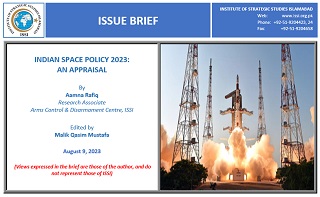The Indian Cabinet Committee on Security approved the much-awaited “Indian Space Policy 2023.”[1] In addition to enhancing the role and capacity of the private sector for further augmentation of the Indian space program, this new policy elucidates the roles and responsibilities of key institutions to ensure regulatory certainty and an all-encompassing framework for the implementation of 2020 space reforms.
Role of Non-Governmental Entities (NGEs)
The space domain in India used to be largely centralized and dominated by the government, especially satellite and rocket manufacturing. The private sector was included only for providing manpower, maintaining supply chains, and other “built-to-suit” undertakings as vendors or contractors. The government used to maintain control over intellectual property (IP) related manufacturing while assigning non-IP-related work to the private sector.[2] However, the current Indian government aims to monetize space technologies and increase its share in the global space economy by expanding the national space infrastructure, which would not be possible without the inclusion of the private sector. Consequently, specifying the role and responsibilities of NGEs is one of the major themes of the new space policy under the 2020 Indian outer space reforms. Currently, the global space economy is witnessing a historical developmental leap in human history in the form of the high number of satellite launches, low-cost manufacturing, innovation, and rapid integration of emerging technologies like cyber, artificial intelligence, and quantum computing in civilian as well as military domains. In 2020, the global space economy was US$447 billion and is expected to reach US$600 billion by the year 2025.[3] It is expected to cross the mark of US$1 trillion by 2040. The Internet/Satellite, Ground Equipment, and Government will be the three top sectors, expected to contribute approximately US$412 billion (39.13 per cent), US$196 billion (18.61 per cent), and US$181 billion (17.19 per cent) respectively in the global space economy.[4]















